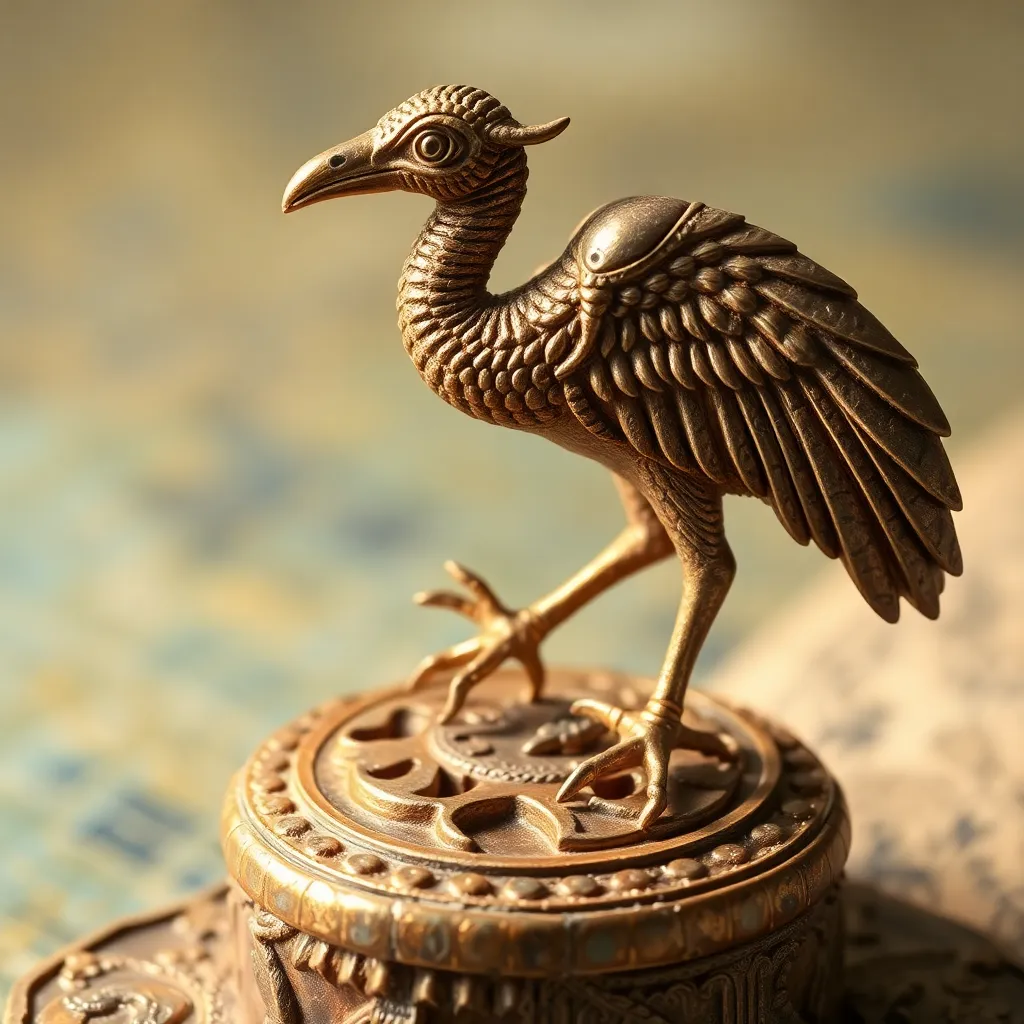The Symbolism of the Vulture in Egyptian Amulet Crafting
I. Introduction
Amulet crafting in ancient Egypt was a complex and highly skilled art form, deeply intertwined with the spiritual beliefs and practices of the time. Amulets were not merely decorative items; they were imbued with protective powers and symbolic meanings, serving to safeguard the wearer in both life and afterlife. The importance of symbolism in Egyptian culture cannot be overstated, as each object, color, and animal carried specific connotations that reflected the ancient Egyptians’ worldview.
Among these significant symbols, the vulture stands out as a powerful emblem of protection, motherhood, and the afterlife. This article will delve into the historical significance of the vulture in ancient Egypt, its representation in amulet crafting, and its enduring legacy in contemporary culture.
II. Historical Significance of the Vulture in Ancient Egypt
The vulture, particularly the species known as the Egyptian vulture, held a prominent place in Egyptian mythology and daily life. It was often associated with the goddess Nekhbet, who was revered as a protector of the pharaohs and the people.
- The vulture as a part of Egyptian mythology: In mythology, vultures were seen as protectors of the dead, often depicted hovering over tombs and funerary processions.
- Associations with protection and motherhood: Vultures are known to fiercely protect their young, making them symbols of maternal care and guardianship.
- Role of the vulture in funerary practices: Vultures were commonly included in funerary iconography, symbolizing the transition of the soul and the protection of the deceased in the afterlife.
III. Vulture Deities and Their Representation
In ancient Egyptian religion, several deities were associated with vultures, with Nekhbet being the most notable. She was often depicted as a vulture or a woman with a vulture headdress, symbolizing her protective nature.
- Overview of key vulture deities: Nekhbet, the vulture goddess, was worshipped primarily in Upper Egypt and was believed to guard the pharaoh and the nation.
- Symbolic meanings associated with these deities: Vulture deities represented safety, nourishment, and the protective aspects of motherhood.
- Influence of vulture deities in amulet designs: Amulets featuring vulture motifs were crafted to invoke the protection of these deities, often used by both the living and the deceased.
IV. Materials and Techniques in Vulture Amulet Crafting
Ancient Egyptian artisans employed various materials and techniques in the crafting of vulture amulets. The choice of materials often depended on the social status of the wearer and the intended purpose of the amulet.
- Common materials used in amulet making: Common materials included faience, stone, gold, and clay, with faience being particularly favored for its vibrant colors.
- Specific techniques employed by artisans: Techniques included carving, molding, and glazing, which allowed for intricate designs and detailed representations of the vulture.
- Variations in vulture amulets across different periods: Over time, the design and style of vulture amulets evolved, reflecting changes in artistic trends and spiritual beliefs.
V. The Symbolism of the Vulture in Protection and Healing
Vulture amulets were believed to possess protective qualities, serving as talismans for the wearer. The symbolism of the vulture extended into the realms of healing and safeguarding against malevolent forces.
- Beliefs surrounding the protective qualities of vulture amulets: It was believed that wearing a vulture amulet could provide safety from harm and ensure the favor of the gods.
- Use of vulture imagery in healing practices: Vulture motifs were incorporated into healing rituals, as the bird was thought to channel protective energies.
- Case studies of vulture amulets found in tombs: Archaeological findings reveal vulture amulets buried with the deceased, highlighting their significance in the afterlife.
VI. Vulture Amulets in Daily Life and Rituals
Vulture amulets were not limited to funerary contexts; they played a role in the daily lives of ancient Egyptians as well. These amulets were commonly worn or carried to invoke protection and blessings.
- How vulture amulets were used in everyday life: Many individuals wore vulture amulets as personal talismans, believing they brought good fortune and safety.
- Significance in rituals and ceremonies: Vulture amulets were often used in religious ceremonies, invoking the presence of divine protection.
- Vulture symbolism in the context of fertility and motherhood: Given their association with maternal care, vulture amulets were also believed to enhance fertility and protect mothers and children.
VII. Modern Interpretations and Legacy of Vulture Symbolism
The legacy of vulture symbolism extends into contemporary culture, where it continues to inspire artists and spiritual practitioners alike. Modern interpretations of vulture motifs often draw upon their ancient meanings while incorporating new artistic styles.
- Enduring legacy of vulture symbolism in contemporary culture: The vulture remains a symbol of protection and renewal, often appearing in modern jewelry designs.
- Influence on modern jewelry and amulet crafting: Jewelers today create vulture-inspired pieces that pay homage to ancient Egyptian craftsmanship.
- The vulture’s role in modern spiritual practices: Many contemporary spiritual practices incorporate vulture symbolism, recognizing its associations with protection and transformation.
VIII. Conclusion
In conclusion, the symbolism of the vulture in Egyptian amulet crafting is rich and multifaceted. From its historical significance in mythology and funerary practices to its representation through deities like Nekhbet, the vulture has left an indelible mark on Egyptian culture.
This exploration highlights the importance of cultural symbols in understanding the beliefs of ancient civilizations. The vulture, as a symbol of protection and motherhood, continues to resonate today, inviting further exploration of the intricate world of ancient Egyptian symbolism and craftsmanship.




